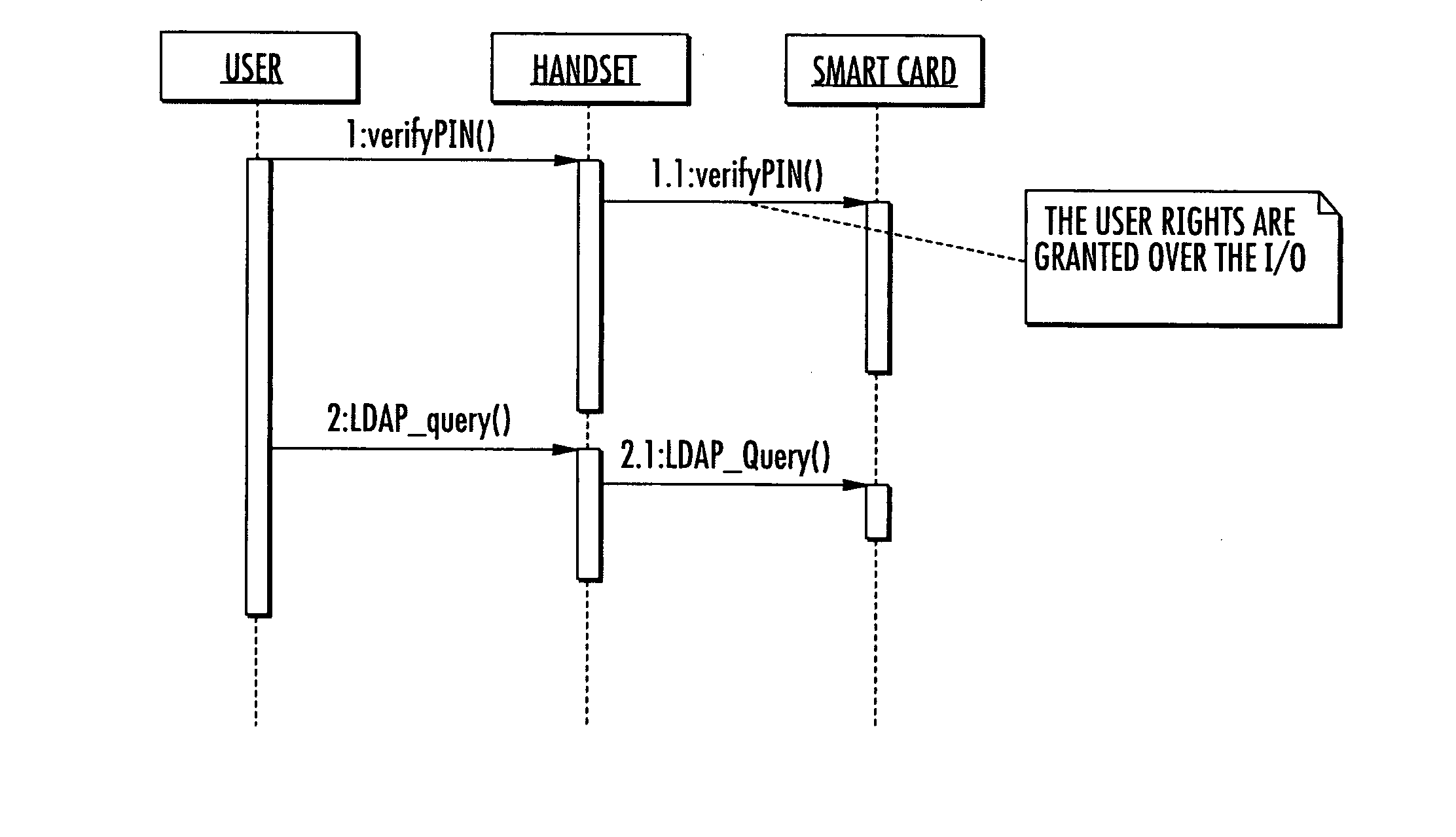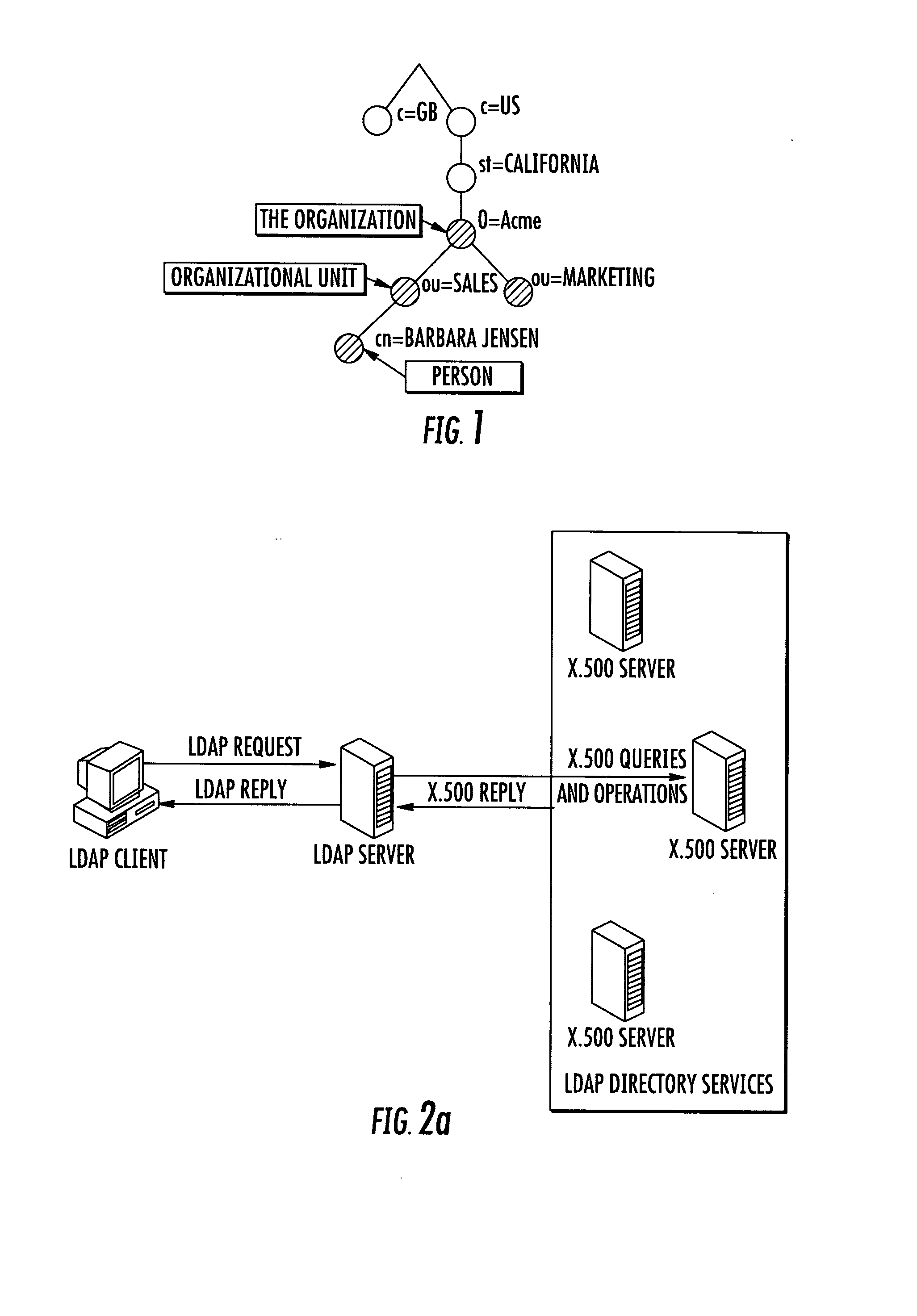Method for accessing structured data in IC cards
- Summary
- Abstract
- Description
- Claims
- Application Information
AI Technical Summary
Benefits of technology
Problems solved by technology
Method used
Image
Examples
second embodiment
[0047] With reference to FIG. 7, a client 13 represents a human user who accesses the phonebook stored on a IC Card 11 of a telephone device 14. The operations on the phonebook required by the human user 13, through an MMI interface of the handset, result in a LDAP query for the IC Card 11. Also according to this second embodiment, the method for accessing data inside the IC Card provides a security policy. More particularly, a specific client in the LDAP client list is defined as the User Equipment UE user. The UE may require an authentication operation to identify a final human user, for example a PIN verification. Once the IC Card verifies a correct PIN, the ACL inside the IC Card may grants operation to the UE user. In other words, the LDAP server defines the allowed operations that may be sent by the User Equipment on the I / O line, replacing the authentication and identification described in a previous embodiment, wherein a CID was provided by the gateway 9.
third embodiment
[0048] an LDAP server on memory unit of the IC Card 11 may also allow assess to an application stored on the memory unit of the same IC Card 11, for example, a Javacard application. In this case, the LDAP server grants operations through a specific virtual client that may be assigned to the application, for example at installation time. Any operation performed by the applet and intended to access the LDAP data structure is granted if the same operation is granted to the virtual client associated to that application. In this case, the authentication and identification described in a previous embodiment, wherein a CID was provided by the gateway 9, is replaced by the authentication and identification based on a virtual client associated to a specific application.
[0049] With reference to FIG. 9 the IC Card 11 stores a javacard application 15. Any operation performed by the javacard application is allowed if the same operation is granted to the virtual client associated to the javacard...
PUM
 Login to View More
Login to View More Abstract
Description
Claims
Application Information
 Login to View More
Login to View More - R&D
- Intellectual Property
- Life Sciences
- Materials
- Tech Scout
- Unparalleled Data Quality
- Higher Quality Content
- 60% Fewer Hallucinations
Browse by: Latest US Patents, China's latest patents, Technical Efficacy Thesaurus, Application Domain, Technology Topic, Popular Technical Reports.
© 2025 PatSnap. All rights reserved.Legal|Privacy policy|Modern Slavery Act Transparency Statement|Sitemap|About US| Contact US: help@patsnap.com



